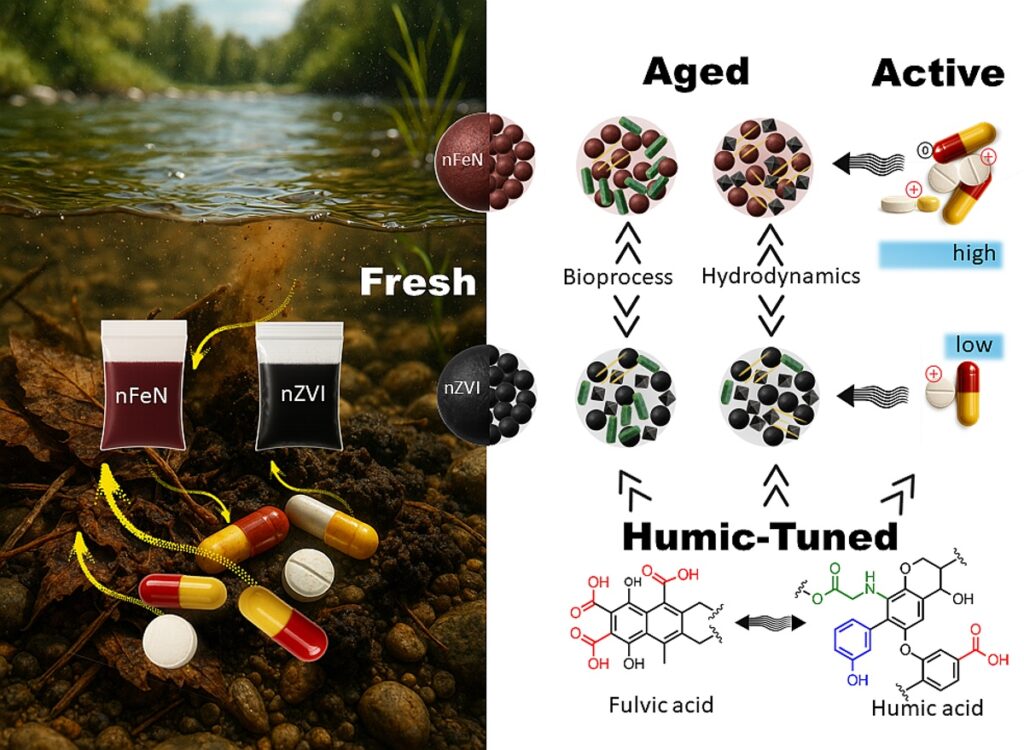New findings in the development of nanotechnology for water purification
A study published in the Chemical Engineering Journal has confirmed the significant influence of organic natural matter on the behavior and effectiveness of innovative iron nitride nanoparticles in water purification in various environments. In addition to scientists from CATRIN, Palacký University, who contributed cutting-edge know-how in the field of environmental nanotechnology to the research, researchers from Spain and France also participated in its creation. The findings are key to the development of sustainable remediation technologies.
The study compared innovative iron nitride nanoparticles (nFeN) with commonly used zero-valent iron nanoparticles (nZVI) in surface waters contaminated with unwanted pharmaceuticals.
“It appears that iron nitride nanoparticles exhibit significantly better ability to retain pharmaceutical substances such as venlafaxine, oxazepam, or carbamazepine under dynamic conditions, in the order of tens to hundreds of nanograms per gram. The key factor was the involvement of natural organic matter, which plays a crucial role in binding these contaminants,” said the article’s first author, Veronika Veselská from CATRIN.
The growing use of pharmaceuticals and other synthetic organic substances, which conventional wastewater treatment plants are unable to completely remove, poses increasing environmental and health risks. These substances, which have a very long lifespan, are released into surface waters or accumulate in sludge. Environmental contamination can have a negative impact on the development of antibiotic resistance, disrupt aquatic ecosystems, and complicate water reuse or sludge treatment. In this context, rapidly developing nanotechnology offers great hope.

“Our results can thus serve as a basis for the development of nanocomposite materials effective in water management environments. Understanding how natural organic matter affects the environmental fate of reactive iron nitride nanoparticles is key to developing sustainable remediation technologies. We now know that when using innovative nanoparticles, it is necessary to take into account the presence of natural organic matter in water,” added Veselská.
The researchers investigated the behavior and interactions of new iron nitride nanoparticles and conventional zero-valent iron nanoparticles in real aquatic environments. Specifically, in the pristine, organic-rich La Guette peat bog and in the urban Egoutier watershed in France, which is affected by wastewater.
The innovative study was made possible thanks to the support of the Barrande Mobility program, which is funded by the Ministry of Education, Youth and Sports of the Czech Republic and, on the French side, by the Ministry for Europe and Foreign Affairs (Ministère de l’Europe et des Affaires étrangères, MEAE) and the Ministry of Higher Education and Research (Ministère de l’Enseignement supérieur et de la Recherche, MESR). The research was also supported by the TECHSCALE project from the Jan Amos Komenský operational program.

